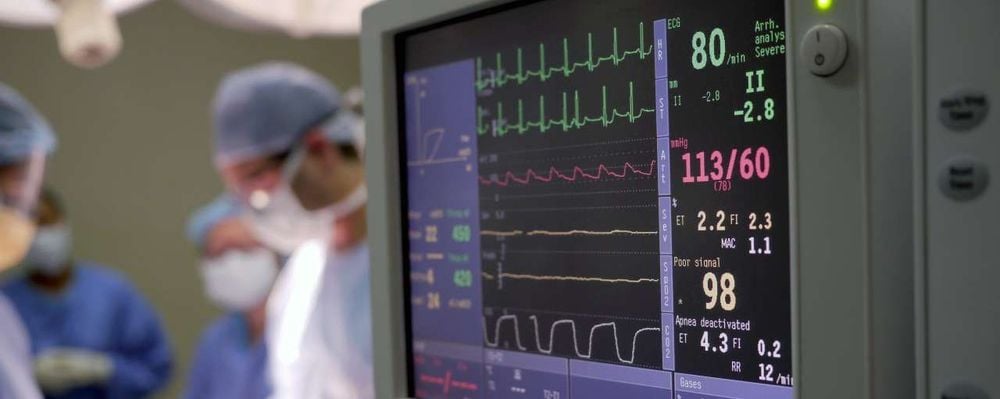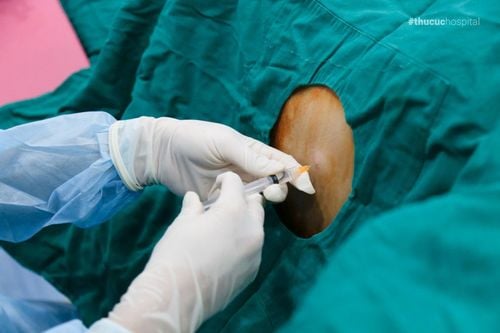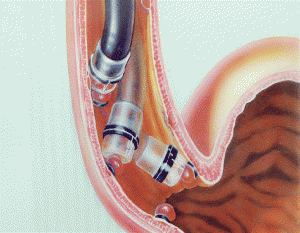This is an automatically translated article.
Posted by CKII Doctor Nguyen Thi Hoai Nam - Head of Pain Relief Unit - Department of Surgical Anesthesia - Vinmec Central Park International HospitalAnesthesia is always associated with surgery, a surgery no matter how big or small needs an appropriate method of anesthesia or anesthesia to proceed smoothly.
The history of anesthesiology is recorded about 15,000 years ago, from ancient times with crude and violent methods such as tying the patient to the operating table, giving alcohol or smoking very drunk, even even used a large tree to hit the patient on the head to put the patient into a coma before performing the operation. As a result, many complications occur and the success rate of surgery is very low, people only operate when there is no other method to cure the disease.
On October 16, 1846, dentist W. Morton used Ether to successfully perform anesthesia to remove a tooth without pain for the first time, marking an important turning point in the history of anesthesia. Since then, many types of drugs, instruments, and methods of anesthesia and anesthesia have been born and developed strongly in parallel with many sophisticated and complicated surgeries that have been successfully performed, bringing effective results. good treatment for the patient. The question is how to choose the optimal method of anesthesia for the patient?
1. What is insensitivity?
Anesthesia is a method of temporarily losing or canceling a patient's pain and sensation by means of drugs and agents that block or cut off nerve impulses. afferent.

Vô cảm giúp người bệnh mất cảm giác tạm thời được thực hiện trong thủ thuật và phẫu thuật
2. How many methods of insensitivity are there?
There are 2 methods of anesthesia:
General anesthesia: Also known as anesthesia, is a method of losing feeling in the whole body and losing consciousness by using one or more drugs. The dose of the drug is adjusted actively, has a specific duration of action, is reversible, and after the effect of the drug wears off, the patient will regain full sensation and consciousness, leaving no sequelae. Regional anesthesia, also known as anesthesia, is a method of temporarily losing or reducing sensation in a part or area of the body but without losing consciousness, the patient is still awake.
3. What is a good insensitivity method?
A good method of anesthesia must achieve the following factors:
Anesthesia: Patient reduces anxiety, induces sleep, forgets what happened during surgery B Painful: Reduces or no pain during surgery Prevents adverse reactions Benefits for the patient (spasms, allergies, shock) Muscle relaxation: Soft muscles to facilitate anesthesia and surgery The most important thing is to ensure patient safety.

Phương pháp vô cảm cần được đảm bảo an toàn cho người bệnh
4. Common anesthetic methods
Commonly used anesthetic methods:
Mask anesthesia: The patient breathes oxygen and anesthetic vapor through a mask, self-breathes or helps to breathe Intravenous anesthesia: Intravenous anesthetic is used intramuscularly or intermittently or by continuous infusion. into a vein with an auto-injector. The patient breathes on his own or is helped to breathe with a mask with oxygen, without using anesthesia through inhalation. Endotracheal anesthesia: An endotracheal tube is inserted through the mouth or nose into the patient's trachea. Anesthesia administered by inhalation or intravenously. Combined anesthesia: As the most common method, endotracheal intubation, combined with many types of sedatives, intravenous anesthetics, respiratory drugs, analgesics, muscle relaxants... to achieve the appropriate level of anesthesia for the patient. surgery.
5. Common anesthetic methods
Commonly used anesthetic methods:
Anesthesia for the skin and mucous membranes: It only relieves pain on the surface, does not lose sensation in the deep. Local anesthetic, penetrating anesthesia: Local anesthetic is injected in the skin, under the skin, in the fascia, does not affect movement Peripheral anesthesia, plexus anesthesia: Injects local anesthetic into contact with the nerve plexus or nerves nerve, causing loss of sensation in an area controlled by a nerve, often causing loss of sensation and paralysis of movement Epidural Anesthesia: An anesthetic is injected into the epidural space to numb the nerve roots. Depending on the surgical site, anesthesia can be given in the neck, thorax, lumbar or sacral regions. Usually the lumbar region is numbed to avoid injuring the spinal cord.

Phương pháp gây tê tủy sống được thực hiện tại vị trí thắt lưng của bệnh nhân
6. How to choose the optimal anesthetic method for the patient?
A method of anesthesia that is best for one patient may not be appropriate for another. To get the optimal method for the patient, the anesthesiologist must examine the pre-anesthesia, assess the patient's condition, the nature of the surgery and based on the situation of his facility to plan the appropriate anesthesia. Methods of anesthesia and anaesthesia can be combined to bring the best effect, minimize the occurrence of accidents and complications, and ensure maximum safety for the patient.
6.1 Patient's condition Current condition Medical history and comorbidities: Cardiovascular, respiratory, neurological, liver, kidney... Special conditions: Allergies, asthma, alcoholism, smoking , drugs... History of insensitivity: Have you been anaesthetized or anesthetized before? Are there any anesthetic complications? Results of current clinical examination and laboratory tests
6.2 Nature of surgery What area? Head, neck, chest, abdomen, limbs... What is the surgery intended to do? How long is the expected surgery time? Nature of the surgery: remove many organs or a few? Laparoscopic or open surgery? Patient position: supine, side or prone? 6.3 Existing facilities Medicines Instruments, machines: ventilators, monitors... Personnel Anesthesiologists Surgeons

Người bệnh được theo dõi bằng hệ thống máy móc trong phòng mổ
At Vinmec Medical System, all methods of anesthesia and anesthesia have been standardized and developed into specific protocols for each type of surgery and disease. After surgery is indicated, the patient will be performed preoperative tests. The anesthesiologist will conduct a pre-anesthesia examination, consult with the surgeon and specialists if there are comorbidities to have an appropriate plan of anesthesia and resuscitation. Surgical methods and anesthesia, analgesia are explained to the patient and family before surgery to get good cooperation in the process before, during and after surgery. This brings peace of mind and confidence of the patient, contributing significantly to the treatment results.
Vinmec International General Hospital with a system of modern facilities, medical equipment and a team of experts and doctors with many years of experience in medical examination and treatment, patients can rest assured to visit. examination and treatment at the Hospital.
To register for examination and treatment at Vinmec International General Hospital, you can contact Vinmec Health System nationwide, or register online HERE.














